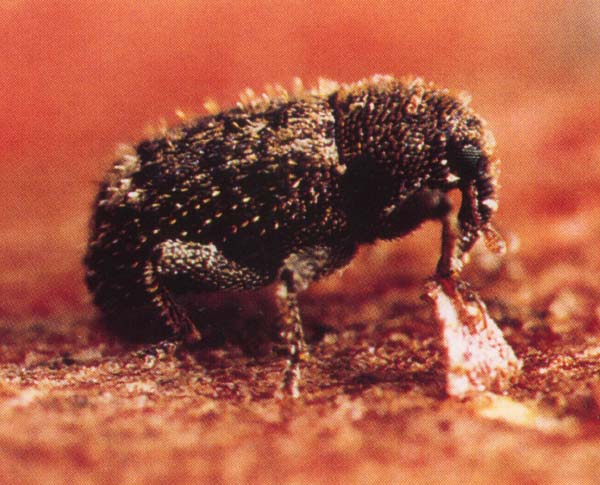|

Adult West Indian Sweetpotato Weevil.
|
Diagnostic
summary
-
larvae and adults feed and tunnel into the stems and storage
roots.
-
damaged roots become bitter, emit terpene odour,
and are not suitable for human or animal consumption.
-
damage continues after harvest in stored roots.
-
damage is characterized by small feeding and
ovipositional punctures on the stem and storage root surface and larval
tunnels filled with frass inside the stems and
storage roots.
-
larval feeding causes thickening, drying and cracking of the stem.
|
Taxonomy
Economic importance
Geographical
distribution
Damage
Morphology
Biology
and ecology
Detection
and inspection
Management
References
View full fact sheet
Related
pages:
Sweetpotato Weevil
Other weevils |

